
Blog, Kids Feet

Knee pain in kids
“Knee pain almost exclusively only affects active kids,” says sports podiatrist and founder of A Step Ahead Foot + Ankle Care Dr Brenden Brown.
“In the majority of cases the knee pain will be related to a specific period of activity.
“Sometimes you have to look back 12 hours before the pain starts to pinpoint the activity that caused it. For example, a child might be sore and suffering from a really painful knee on Sunday yet because they didn’t hobble off the footy field after their game on Saturday the parents don’t relate the pain to playing football.”
Causes of kids’ knee pain
Dr Brenden says knee pain in children is predominantly caused by Osgood-Schlatter disease.

What is Osgood-Schlatter disease?
Osgood-Schlatter disease is characterised by a painful lump just below the kneecap.
According to the American Academy of Orthopaedic Surgeons, ‘Osgood-Schlatter disease most often occurs during growth spurts, when bones, muscles, tendons, and other structures are changing rapidly. Because physical activity puts additional stress on bones and muscles, children who participate in athletics—especially running and jumping sports—are at an increased risk for this condition. However, less active adolescents may also experience this problem.’
Treating knee pain in kids
“The most common treatment approach by practitioners is stretching or advising the child to stop playing sport.
“I disagree,” says Dr Brenden.
“Telling kids to stop playing sport is not a treatment modality. It’s simply avoiding the cause of the pain. Once they start activity again, BOOM the pain re-appears!
“Similarly, stretching alone will not, in most cases, cure the underlying problem. I see children who are given stretching routines by their healthcare professionals time and time again, season after season. If knee pain is an ongoing problem for the child, we should be evaluating their foot posture in order to find the core problem and a positive long-term solution.”
Dr Brenden adds, “There are far too many viable treatment options available which can address the underlying issue of knee pain and keep children active.
“Advising a child to stop playing sport is no longer necessary and is in fact detrimental to child’s long-term health”

Tips to prevent knee pain in kids
—Warm up properly. Before you “warm up” with a jog, try walking at a moderate to brisk pace 4 times around the football field (8 times around a netball court). Start slow, increase as you progress—NEVER run!
—Ensuring you’re wearing the right footwear can help protect the knees. Wear good, supportive, sports-specific shoes (not the trendiest runners you can find!).
“Choosing appropriate footwear that’s specific to the sport being played would likely reduce the amount of foot-related injuries we see by at least 25%,” says Dr Brenden.
—Work on improving the leg muscle strength and flexibility. Isometric strength exercises are readily accessible and can be performed anywhere—even when in pain!
Related articles:
Warming up for sports…why bother?
What’s causing your child’s heel pain?
Common kids’ foot complaints
ABOUT US
A Step Ahead Foot + Ankle Care is one of Sydney’s leading foot and ankle clinics. Principal podiatrist and founder of A Step Ahead Dr Brenden Brown (AKA Dr Foot) has been taking care of people’s feet for more than 20 years.
With a background in sports medicine and having served as a former president of the Australasian Podiatry Council, Brenden is a wealth of information when it comes to foot and ankle care.

Blog, Heel Pain, Sports Care

Isotonic versus isometric movements for heel pain
“It’s becoming much more widely recognised and accepted that stretching is not good for tendon pain. Instead, we should be looking at building muscle and tendon strength,” says sports podiatrist and founder of A Step Ahead Foot + Ankle Care Dr Brenden Brown.
Professor Jill Cook, from La Trobe University’s Sport and Exercise Medicine Research Centre, has a wealth on knowledge about tendon injury. She says, “Aside from the load on your tendon when you play sport, there are compressive loads on your tendon when it is at its longest length, adding stretching to most tendons only serves to add compressive loads that we know are detrimental to the tendon. Stretching while you are standing can be especially provocative to your tendon.”
Isotonic Vs isometric
Isotonic contractions generate force by changing the length of the muscle and tendon
[For example, going up and down on your toes (calf raise)]
Isometric contractions generate force without changing the length of the muscle or tendon.
[For example, going up on your toes and holding in the upward position]
“People are familiar with isotonic exercises, particularly for the pain associated with Achilles Tendinopathy. There was a well know technique called the ‘Alfredson technique’, in which people would stand on edge of a step and lower their heels up and down over the back of step.
“This has long been therapists’ go-to exercise, for heel pain in particular. However, we now know this only serves to irritate and aggravate this condition, yet it doesn’t have to be so,” says Dr Brenden.
“We need to graduate the building of strength and to do this we start with isometric movements, rather than rushing straight into isotonic movements.”
Isotonic versus isometric movements for heel pain
For the majority of people the process involves moving from isometric holds with quite heavy loads of body weight or beyond.
After we’ve developed significant load and reduced the symptoms, including pain, we begin to move into the next phase, which includes isotonic movements.
From there we move to more functional strength exercises that are specific to your activity or sport.
This means the exercises can’t just be calf raises, they need to be aligned to the individuals activity so that their tendon is ready for the activity they’re about to re-enter into.
“I like to refer to isometric loading as ‘progressive muscle loading’. Gradual loading is such a vital part; if people are not progressing they won’t get back healthy strong tendons,” says Dr Brenden.
Common mistakes people make when performing isometric exercises
- They don’t loading heavy enough. Remember, tendons are built for strength so they can take quite a bit of weight.
- They don’t load for long enough
- They don’t progress. Instead they plateau out. At all times, on a day-to-day basis moving through to a week-to-week basis you should be progressively increasing time and load to develop the tendon’s and muscle’s strength and capacity.
Related articles:
Warming up for sports—why bother?
10 things you should know about heel pain
A Step Ahead Foot + Ankle Care is one of Sydney’s leading foot and ankle clinics. Principal podiatrist and founder of A Step Ahead Dr Brenden Brown (AKA Dr Foot) has been taking care of people’s feet for more than 20 years.
With a background in sports medicine and having served as a former president of the Australasian Podiatry Council, Brenden is a wealth of information when it comes to foot and ankle care.
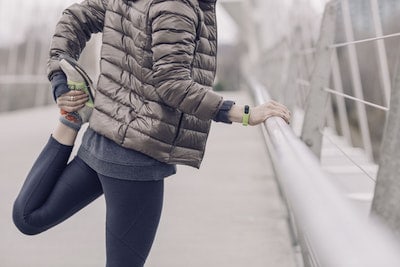
Blog, Sports Care
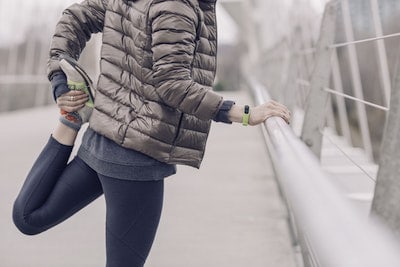
Warming up for sports—why bother?
“Warm-ups have the ability to help prepare the muscles for activity. However, what’s changed is that we now question many ‘traditional’ warm-up methods; evidence suggests that static stretching probably shouldn’t be part of most people’s warm up routine,” says founder of A Step Ahead Foot + Ankle Care Dr Brenden Brown.
“The days of a few quick hamstring stretches followed by a run around the field are long gone. Modern warm-ups are more cleverly designed; they need to be more specific to the sport we’re playing or the activity we’re embarking on.”
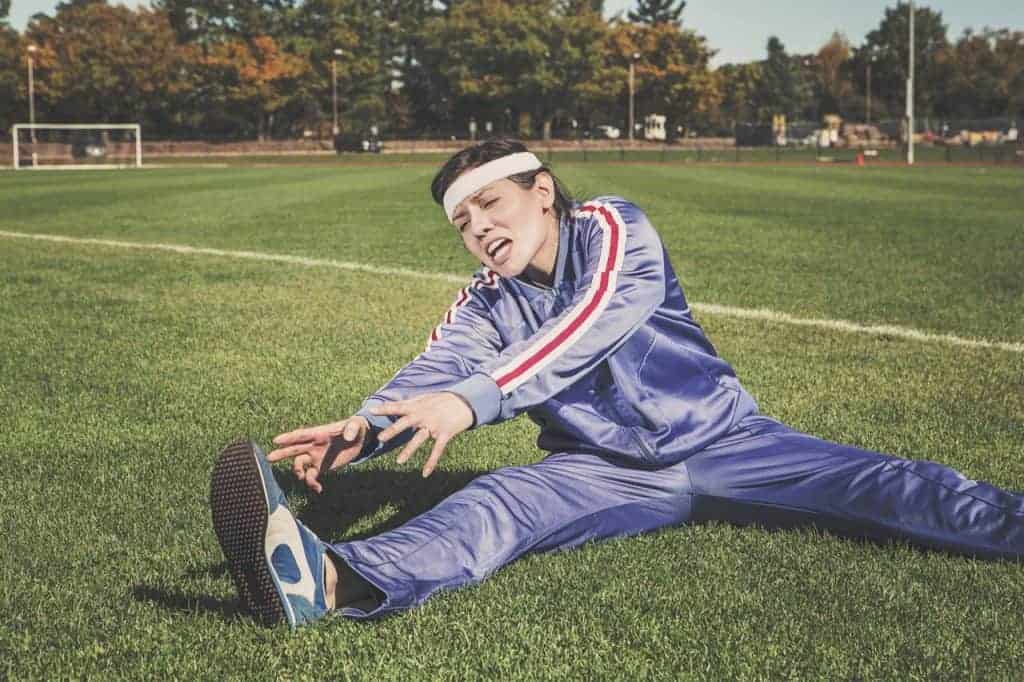
The benefits of warm-ups
“Preparing the body for participation in sports by warming up, will enhance the maximal performance and reduce the risk of injury! This is a sentence I often find myself repeating over and over again to my young patients,” says Dr Brenden.
“The Netball World Cup was a great example of how warming up is directly linked to injury prevention and optimum performance. The public was able to see first hand the amount of time the best teams in the world spend on warming up before games.
“Warming up improves blood flow to the heart, increases the muscle temperature and makes muscles more pliable.
“Cold or less pliable or elastic muscle works harder to accommodate a given load and will be more resistant to sudden stretch. Less pliable muscle tissue is also more susceptible to overuse injuries.
“No matter what the sport or activity is, players can begin their warm-up by walking a couple of laps of the soccer field or court. Increase the pace on the second lap to turn it in to a brisk walk but don’t jog or run.
“As you walk you’re infusing the tissue and muscles with blood to gently warm up the body. At the end of a gentle warm-up your muscles are ready to be used.”
The ‘right’ kind of netball warm-up
“I continue to see kids doing two types of warm-ups. They either run from one end of the netball court to the other and that’s it or they go back to the classic—are dare I say outdated—routine involving calf stretches, hamstring stretches, touching toes and throwing the ball into the hoop.
“If we take netball as an example, the warm-ups need to be specific to the sport. Most netballers need to be doing lots of side-to-side movements, twists, turning and cutting movements.
“This might include doing the grapevine across the court, side-to-side stepping, moving up to side-to-side hoping and jumping. Standing still, pointing the toe and rotating the ankle is also useful as part of a warm-up.
“The warm-up routine needn’t take half an hour but it should take approximately 10-15 minutes.”

To stretch or not to stretch—this is the question!
Dr Brenden explains, “By stretching out a muscle and holding it there (static stretching) we’re pushing the tissue past where it needs to go, which could do more harm than good.
“This type of stretching is also not sports specific. However, stretching doesn’t always mean stretching out a muscle and holding it there.
“Dynamic stretches differ from the norm in that they stretch the body through movement. So instead of holding the muscle in a static stretched-out position, you move gradually through the movement.
“At best, I’d call this a light stretch. There should be no risk of over-stretching the muscles.”
8 reasons to warm up
- Increases range of movement
- Warms up muscles in prepares for activity
- Increases fluid production to lubricate joints
- Triggers the neural pathways between your brain and your muscles
- Improves reaction and response time
- Reduces risk of injury
- Potential to improve performance
- Helps improve recovery time
Related articles:
Winter sports’ greatest enemy….ankle sprain
Your guide to rock-solid ankle stability
A Step Ahead Foot + Ankle Care is one of Sydney’s leading foot and ankle clinics. Principal podiatrist and founder of A Step Ahead Dr Brenden Brown (AKA Dr Foot) has been taking care of people’s feet for more than 20 years.
With a background in sports medicine and having served as a former president of the Australasian Podiatry Council, Brenden is a wealth of information when it comes to foot and ankle care.
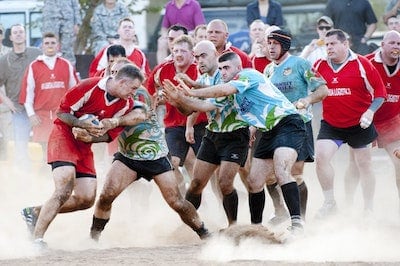
Blog, Sports Care

Winter sports’ greatest enemy…ankle sprain
Winter sports season means netball, footy and rugby union games galore (maybe even a spot of skiing!), but it also presents the increased risk of ankle sprains and strains…
“The chilly season means that muscles become cold. Without adequate warm-up exercises the muscles and connective tissue aren’t as flexible as they should be and this can lead to injury,” says Dr Brenden Brown, sports podiatrist and founder of A Step Ahead Foot + Ankle Care.
Dr Brenden is calling on health practitioners to “up their ankle game” beyond the simple “text book approach”.
“Ankle sprains are a common winter sports injury. They occur as a result of involuntary sliding or twisting of the feet when you step on slippery or unstable ground. The sprain happens when the foot is forced into an unnatural position
“The intensity at which the ligaments stretch can sometimes be so severe that it causes fracture or serious inflammation and pains. Doing whatever you can to prevent an ankle sprain is a no-brainer.”
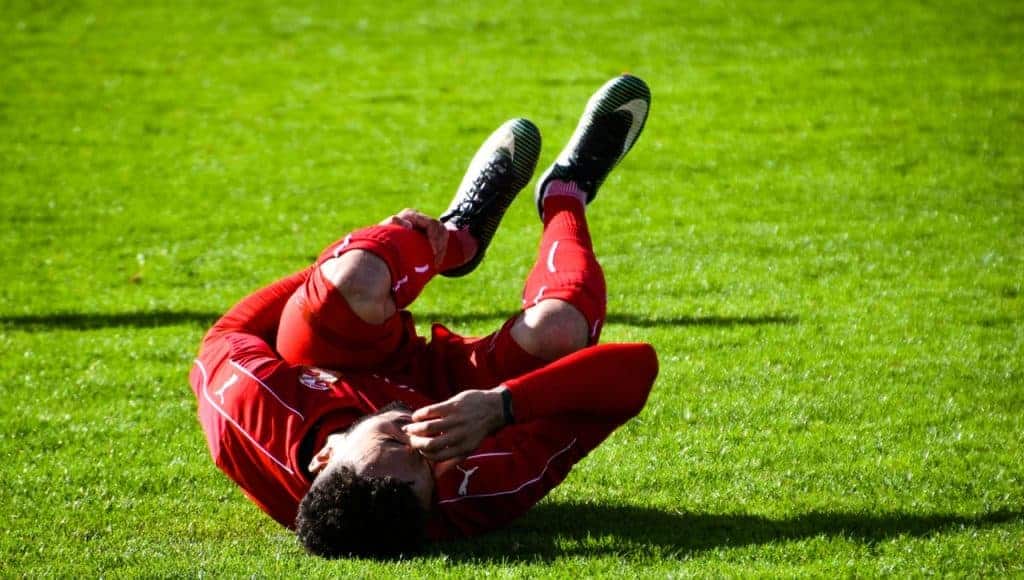
Avoiding winter sports ankle injuries
Planning ahead is a great way to prevent winter sports injuries—particularly when it comes to ankle injuries. With the right preparation and precautions you can reduce the risk of an ankle sprain or strain.
“The common preventative treatment for ankle sprains is balance exercises, but while this might go some way to help reduce ankle sprains the approach really needs to be multi-factorial,” says Dr Brenden.
“To lessen the risk of injury you need to use taping, bracing and practice strength exercises.”
But be warned, Dr Brenden explains that many healthcare professionals—including, physios, chiros, sports coaches and others—at times only suggest doing calf raises. He says, “This is fine if the sport you’re doing only requires you to move the ankle up and down, but if your sport means moving your ankles side to side (for example, skiing, netball, rugby league, football and almost all sports!) then calf raises are of no use.
“A textbook response to ankle sprains will often end patients in trouble. If your health professional is merely suggesting calf raises, it’s time to look further afield.
“More and more evidence suggests we need to look much further up the body, toward the gluteal muscles and alike.
“As such, your strength training needs to incorporate more than just your ankle and should be more sport specific.”
Dr Brenden says you need to functionally challenge the ankle in order to strengthen it appropriately and a special emphasis should be on preparation.
“Those participating in winter sports (or any sports for that matter!) can benefit from completing a tailored muscle strength-conditioning program. This is particularly the case if you’ve suffered a previous ankle sprain or are at high risk of injury.”

Points to note:
- Ankle strengthening activities should include hoping, jumping and cutting movements if that is part of your sport
- Strength exercises should include loading the muscles to be able to dynamically work as they would in your chosen sport
- Loading the muscle prepares your muscles for the activity ahead. This may include using more than just weight-bearing exercises and incorporating resistance-based training.
Additional measures to help prevent ankle sprains include:
- Warming up. Cold muscles are less flexible and more prone to injury
- Wearing footwear appropriate to your sport
- Making sure your footwear fits you properly (loose boots can cause falls, increasing risk of ankle injury)
- Taking the time to cool down. Slow stretching can reduce post-sports muscle tightness and soreness and may help reduce future risk of injury
- Knowing your limits and sticking to them
Treating your ankle sprain
The immediate treatment for an ankle sprain is the RICE approach. This incorporates: Rest, Ice, Compression and Elevation.
- REST: “if it hurts don’t do it”. Giving your ankle a period of rest after the sprain can assist with healing
- ICE: apply ice packs to the ankles, or area of discomfort
- COMPRESSION: apply bandages over the injured area. Compression socks are available from your local podiatrist’s clinic
- ELEVATION: lift the foot up above the waist or heart.
“Evidence shows that ankle sprains are unlikely to get better by themselves. Plus once you have an ankle sprain, you’re significantly more likely to have another sprain.”
“So just like the pre-sport preparation phase, it’s time to get back to strength and exercise-based rehabilitation as your next phase in rehab,” says Dr Brenden.
Related articles:
Your guide to rock-solid ankle stability
Your guide to choosing the best netball shoe
Your guide to choosing a footy boot
Think you have a heel spur, think again
A Step Ahead Foot + Ankle Care is one of Sydney’s leading foot and ankle clinics. Principal podiatrist and founder of A Step Ahead Dr Brenden Brown (AKA Dr Foot) has been taking care of people’s feet for more than 20 years.
With a background in sports medicine and having served as a former president of the Australasian Podiatry Council, Brenden is a wealth of information when it comes to foot and ankle care.
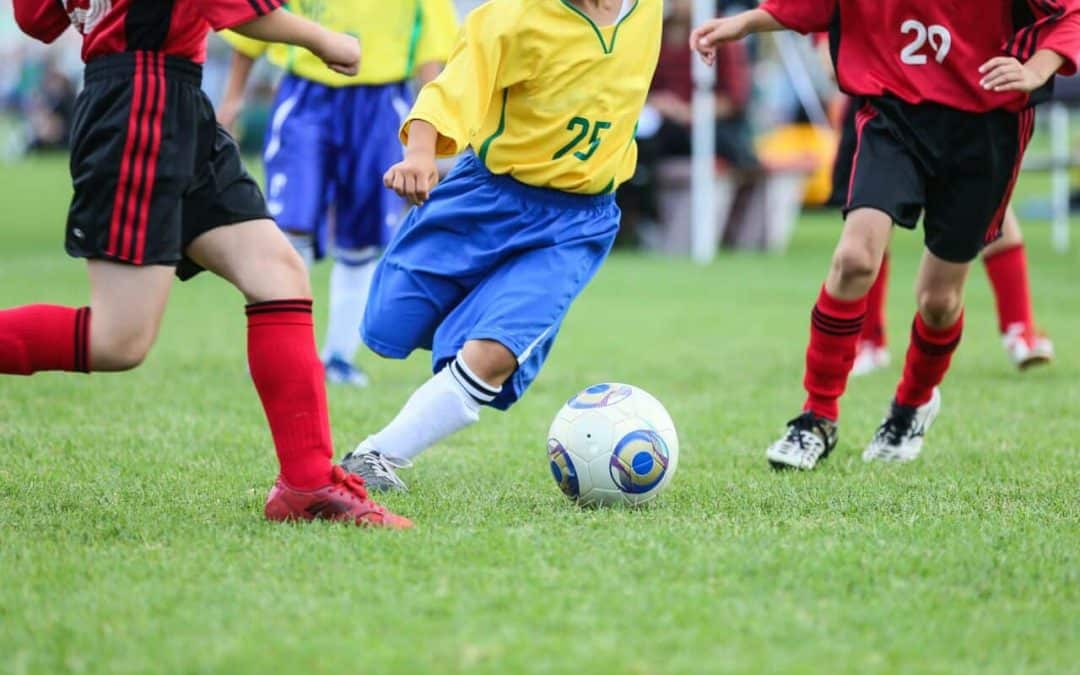
Blog, Sports Care
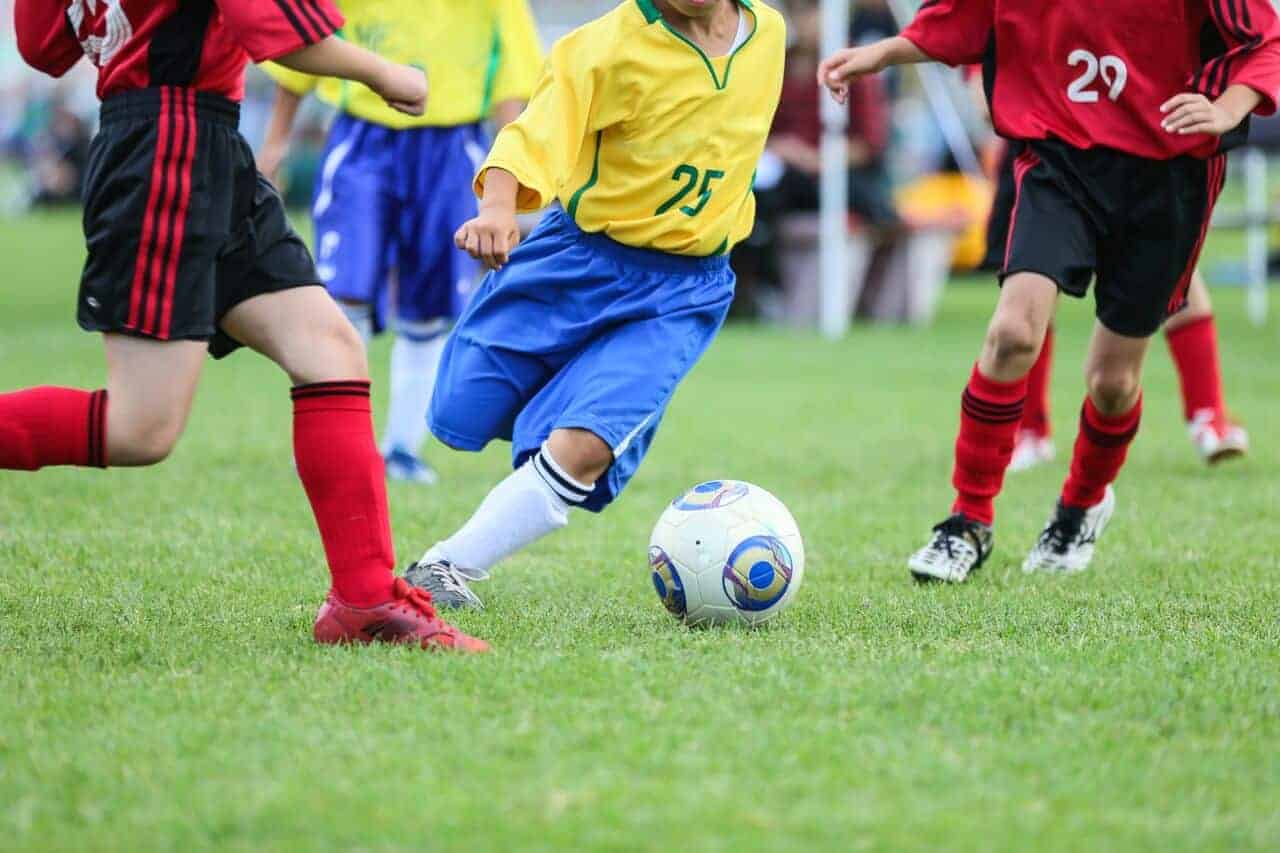
Your guide to choosing the right football boot
“Numerous sports people come to see me every year and apart from problems with foot or body posture, a big issue is wearing the wrong football boots for their feet,” says sports podiatrist and founder of A Step Ahead Foot + Ankle Care Dr Brenden Brown.
Common football foot injuries and how you can avoid them
Achilles tendonitis and Sever’s disease
“Most shoes are not flat, they’re higher at the heel than at the front. Yet, the majority of football boots on the market are perfectly flat.
“A combination of tight muscles (muscles that are overworking due to sport) plus wearing completely flat shoes—which is common in most footy boots but uncommon in your regular footwear—can lead to serious foot problems in adults and kids. Foot issues include pain in the arch of the foot and heel pain.”
Quick fix: To address some of the issues associated with flat shoes, most podiatrists can give you a heel raiser to pop in the back of the shoe. You can also look for a football boot with a raised heel.
Ankle strains
“Amongst other things, one of the keys to preventing ankle strains is to avoid shoes with a highly flexible shank (midsole),” says Dr Brenden.
“When selecting a football boot —or any shoe for that matter—hold the shoe with one hand on the back heel and the other hand on the toes and try to twist in opposite directions, as if you’re wringing the shoe out. If you can wring out the shoe easily (like a cloth), it’s a no, no.
“Good football boots won’t allow you to do this; they should have strength and support in the midsole section to control and stabilise your foot. This can help to protect against ankle strains.”
Shin splints
“Most football boots are designed with a flat foot bed, which can lead to many issues — one of which is shin splints. Shin splints are more common in people with flatter feet than in those with high arches and can be a result of poor choice of football boot or sudden increase in activity.”
Dr Brenden explains that the lack of cushioning puts excess pressure or force on the muscles, tendons and bone tissues surrounding the shin. This leads to inflammation and pain.
“Calf tightness is also a culprit!” he adds.
Quick fix: Stretch out those calves. Make sure to stretch both muscles. A quick internet search will throw up lots of great calf-stretching exercises.

A guide to choosing a great footy boot
“Footy boots are often designed for and around elite footballers and while a particular football boot might be fine for Beckham—it’s often not ideal for Bradley in the Under 13s!”
General Manager of product for ASICS Mark Doherty says, “In ASICS football boots we raise the heel by 10mm and that’s quite unique to ASICS; most footy boots are flatsole boots (or zero platform as we call it).
“The principle behind the 10mm heel is injury prevention; it raises the heel to take a bit of the strain of the muscles in the lower limb and hopefully it helps with some of the muscle overuse injuries that people get.”
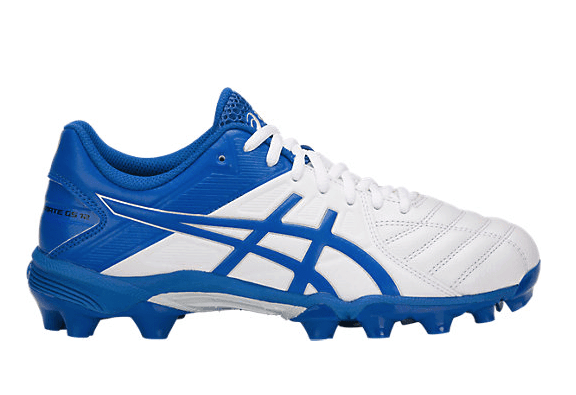
ASICS Lethal Ultimate has a full midsole—on the fore foot and the rear. It also still has the 10mm heel raise. The idea behind the Ultimate is that it offers comfort and cushioning, so on really hard Aussie ground it gives the added protection that you don’t normally get from a soccer boot.
“The midsole also allows for a wider fit,” adds Mark.
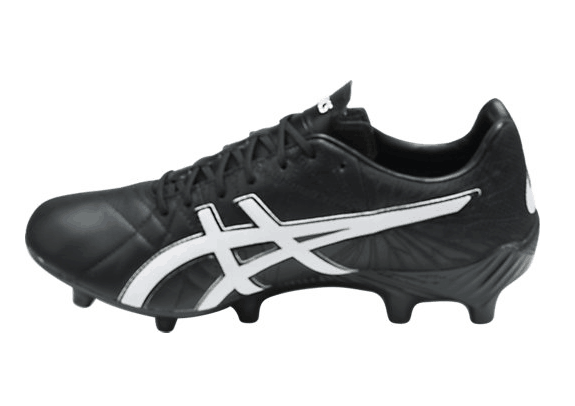
“The Lethal Tigreor is a speed shoe. They look like any other football boot (from other brands) but they’re unique in that they have a midsole in the rear of the shoe, which gives the shoe that 10mm raise.
“Our boots are also unique in that they all have a removable sockliner. You can take the sockliner out and put an orthotic in without losing that all-important depth in the heel of the shoe.”
He says price will play a factor in determining the quality of the shoe. Shoes can vary from 100% synthetic upper to part synthetic, part leather through to full kangaroo leather (as is the case with ASICS Testimonial).
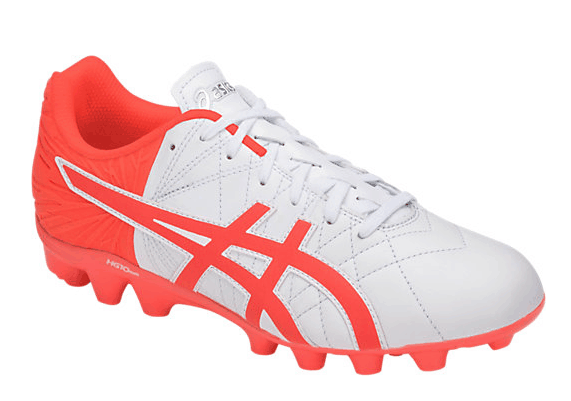
“The Tigreor Junior has a kangaroo toe box, which is unique and feels really good. Kangaroo is only 0.8 mm thick, whereas most synthetic or calf leather is 1.3mm thick. The thinner the material the better, as you get a greater feel of the ball. Kangaroo is thin but also very tough, making it ideal for football boots,” says Mark.
Key factors to consider when selecting a footy boot
- It needs a firm heel counter
- You shouldn’t be able to wring or twist the shoe
- A shoe shouldn’t bend in the middle
- It should be highly flexible in the toe area
- Most people will also benefit from having a slight heel raise
Other articles you might like:
Your guide to rock-solid ankle stability
10 things you should know about heel pain
Think you have a heel spur? Think again
A Step Ahead Foot + Ankle Care is one of Sydney’s leading foot and ankle clinics. Principal podiatrist and founder of A Step Ahead Dr Brenden Brown (AKA Dr Foot) has been taking care of people’s feet for more than 20 years.
With a background in sports medicine and having served as a former president of the Australasian Podiatry Council, Brenden is a wealth of information when it comes to foot and ankle care.
























 Dr Brenden’s White paper report on the “6 Reasons You Won’t Beat Heal Pain” outlines what’s stopping you from beating this and tips on how to stop it in its tracks!
Dr Brenden’s White paper report on the “6 Reasons You Won’t Beat Heal Pain” outlines what’s stopping you from beating this and tips on how to stop it in its tracks!